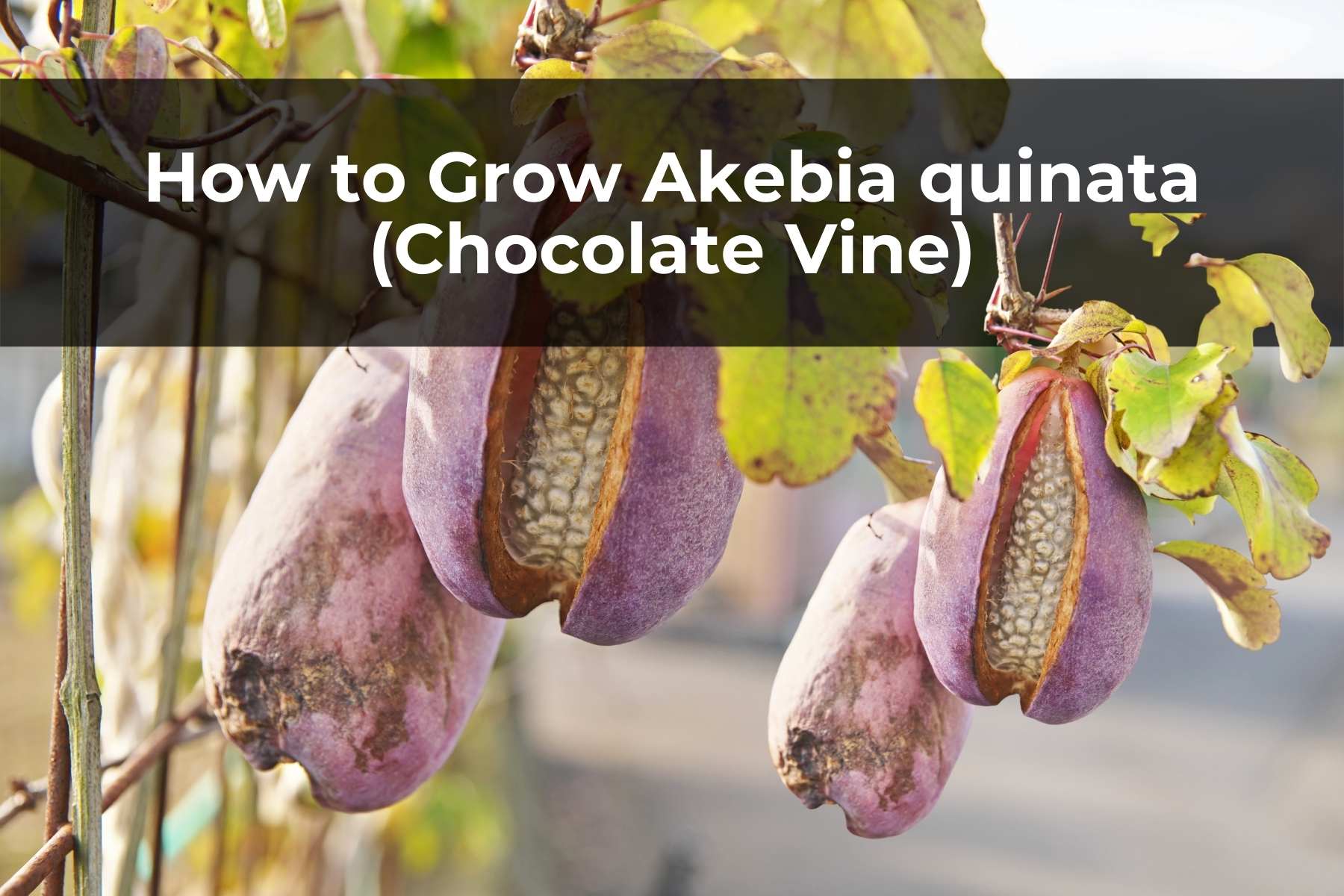Last Updated on June 12, 2023 by Real Men Sow
The five-leaf, perennial chocolate vine (Akebia quinata) is both a native of Asia and North America. The rich, chocolate-scented flowers that cover the chocolate vine are what give it its name. This is a rare feature among perennials that bear chocolate scents. Growers may find this unique trait to be a plus.
The vine produces oval-shaped, glossy dark green leaves. They grow in groups of five. Three petals make up the dangling flower. They appear in spring, from March to May. Sometimes they are followed by eggplant-like fruits in the late summer. Although the fruit chocolate vines produce edible fruits, they are not very tasty. If you decide to harvest them, you might recognize their appearance as kiwi with small black seeds in the pulp.
This vine will grow fast and vigorously. It can grow up to 40 feet per growing season. It is not susceptible to serious diseases or pests, which is why it has been referred to as an invasive plant.
Propagating Chocolate Vine (Akebia quinata)
If you have a chocolate vine plant, you can use softwood cuttings to propagate it. Here’s how:
- Use pruners or clean shears to cut a length of at least 6 inches in spring. You should take the cutting from the spring growth of a vine that has been blooming for at most one year.
- Place the cuttings into a small container with lightly-seasoned fine compost.
- The pot should be kept in a warm and humid place until the cuttings grow. This will take about two to three months. If you feel the cutting resisting, it’s possible to check its progress.
- After the roots have been established, you can replant your cutting in its permanent place. It is important to not disturb the roots once they are established. This could cause serious damage to the plant.
How to Get Akebia quinata (Chocolate Vine) to Bloom
A lot of sunlight is the most important thing for a chocolate vine to bloom. It will be difficult to get the vine to bloom if it is in a forest environment or shaded by trees or other structures.
You’ll need to ensure that your chocolate vine has enough sunlight. A healthy, happy chocolate vine will also need phosphorus. You can fertilize your soil with a phosphorus-rich fertilizer mix or add bone meal to it and see if this helps.
General Care Guide for Akebia quinata (Chocolate Vine)
Light
A lot of sunlight is the most important thing for a chocolate vine to bloom. It will be difficult to get the vine to bloom if it is in a forest environment or shaded by trees or other structures.
You’ll need to ensure that your chocolate vine has enough sunlight. A healthy, happy chocolate vine will also need phosphorus. You can fertilize your soil with a phosphorus-rich fertilizer mix or add bone meal to it and see if this helps.
Soil
Although chocolate vine can grow in many soil types, the best combination is one that contains sand and loam combined with high levels of organic matter. The vine needs to be able to drain properly.
Water
Ensure that vines are watered weekly until they become established. Then, water during drought periods so that they get at least an inch of water each week. The chocolate vine is mildly resistant to drought conditions. You can wait until the soil is dry before watering.
Temperature and Humidity
The best climate for Akebia quinata (Chocolate Vine) is between 55 and 85°F. The vine can lose its leaves in winter, but they will grow back in spring. The vine can tolerate humidity, although it is not the best choice for humid areas.
Fertilizer
The Akebia quinata (Chocolate Vine) is a light feeder and does not require any additional fertilizer. For vines that are growing in poor soil, you can add trace nutrients to the soil by mulching with compost and well-rotted manure. The vine will generally grow quickly without any intervention.
Pruning the Akebia quinata (Chocolate Vine)
Due to the vigorous growth habits of the Akebia quinata (Chocolate Vine), it is necessary to prune it regularly. To keep the chocolate vine in check, many gardeners cut it back to the ground in winter. However, you can lighten the pruning throughout the year to make it tidy after flowering. You can either use shears or pruners depending on the thickness of your vine. Then, cut the vine to the desired length. Finally, snip 1/4 inch above a leaf node or leaf.

